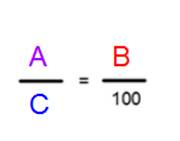The triangle congruence theorems (SSS, SAS, ASA and HL) can only be used to show that two triangles are congruent to each other. You can’t use them to show that sides or angles are congruent.
However, CPCTC is used to show that parts of triangles are congruent to each other. CPCTC cannot be used to show that triangles are congruent.
When you construct a proof that asks you to show that two segments or two angles in a triangle are congruent, most of the time you will first show the triangles are congruent, and then use CPCTC to show the corresponding parts are congruent.
Remember that CPCTC can’t be used until you have already shown that the triangles are congruent.





